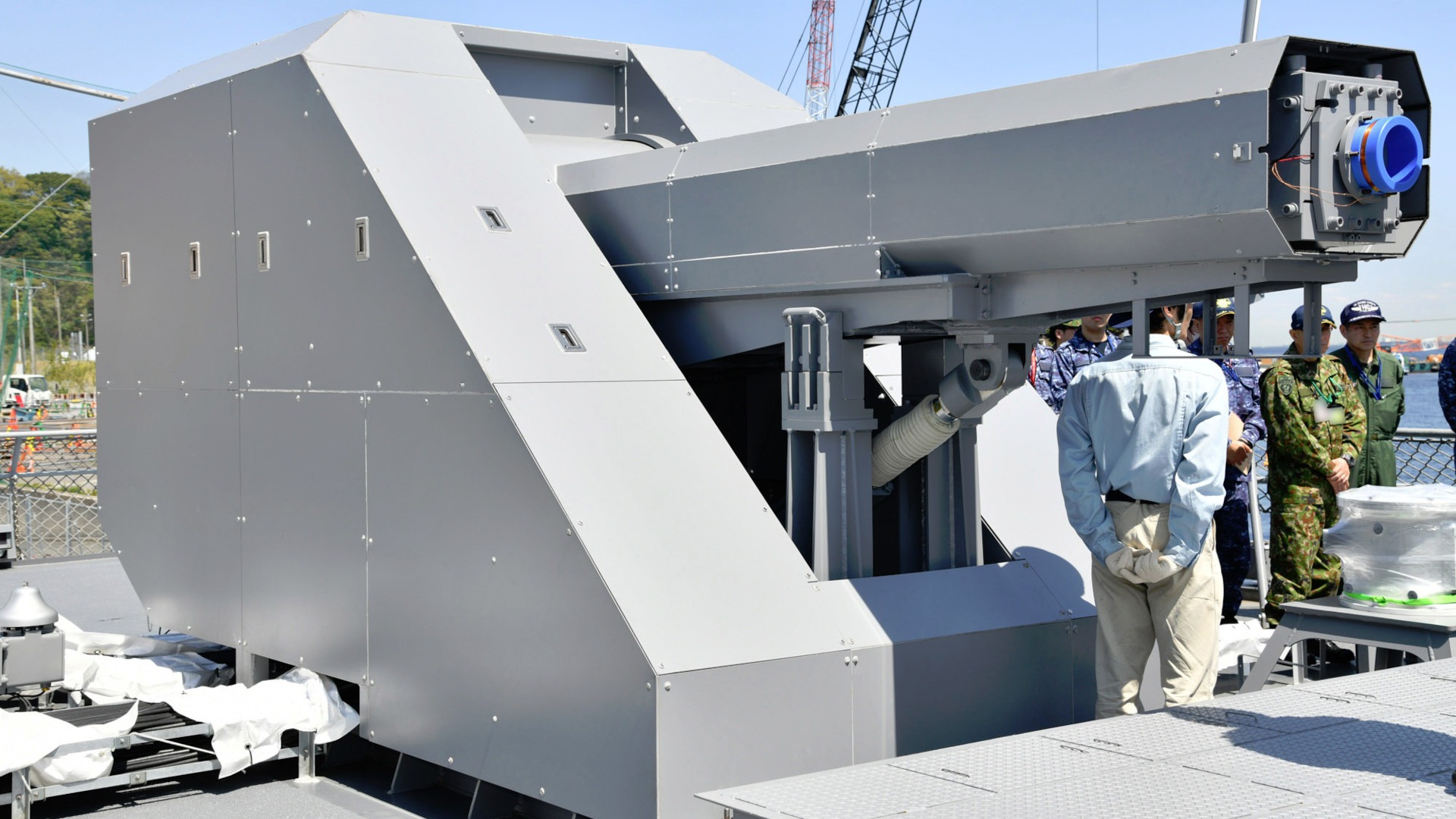Las Fuerzas de Autodefensa Marítima Conjunta de Japón (JMSDF) han publicitado la instalación de un Cañón Electromagnético (RAILGUN) montado en su banco de ensayos, en el buque de guerra “JS Asuka”. Hace más de una década que este país avanza en el desarrollo de estas tecnologías potencialmente disruptivas, siguiendo la tendencia de potencias como EEUU, China y Rusia. Estos revolucionarios sistemas emplean energía electromagnética, para propulsar proyectiles de artillería guiados, a velocidades cercanas a Mach 7. Más allá de los desafíos que su desarrollo impone, se presentan como una extraordinaria alternativa que potenciaría las capacidades de la artillería tanto naval como terrestre, en términos de alcance, poder de fuego, precisión y la posibilidad de independizarse de materiales energéticos como las pólvoras y explosivos.
The Japan Self-Defense Forces have offered an official look at the turret-mounted electromagnetic railgun now installed on the test ship JS Asuka. The Japanese Ministry of Defense’s Acquisition Technology & Logistics Agency (ATLA) has been working on railguns since the mid-2010s, which could be a future armament for Japanese warships and could also be employed in a ground-based mode. This is also a category of weapons that the U.S. Navy notably shelved development of in the early 2020s after work that showed great promise ran into technical hurdles.
The Japan Maritime Self-Defense Force (JMSDF) released the picture, seen at the top of this story, of the railgun on JS Asuka today. The image was taken during a visit to the ship by Vice Adm. Omachi Katsushi, commander of the Self-Defense Fleet, on April 9. Ship spotters in Japan had first begun to post images of the new addition to JS Asuka earlier this month. A dedicated testbed with a warship-like design, the 6,200-ton-displacement vessel has been used to support the development of weapons and other naval systems since it was first commissioned into Japanese service in 1995.
“On 9 April, Vice Admiral Omachi Katsushi, Commander of Self Defense Fleet (COMSDFLT), visited JS Asuka, which belongs to the Fleet Research and Development Command (FRDC) under the command of the Self Defense Fleet to observe the latest status of a ‘Railgun,’ which is under development at the Acquisition, Technology & Logistics Agency (ATLA),” according to a brief statement from the JMSDF. “In preparation for future combat, the Self Defense Fleet promotes research, development, and earlier introduction of equipment necessary for the JMSDF in close collaboration with the ATLA and other organizations, as well as continues to build up its defense posture to protect Japanese citizens and the territorial waters.”
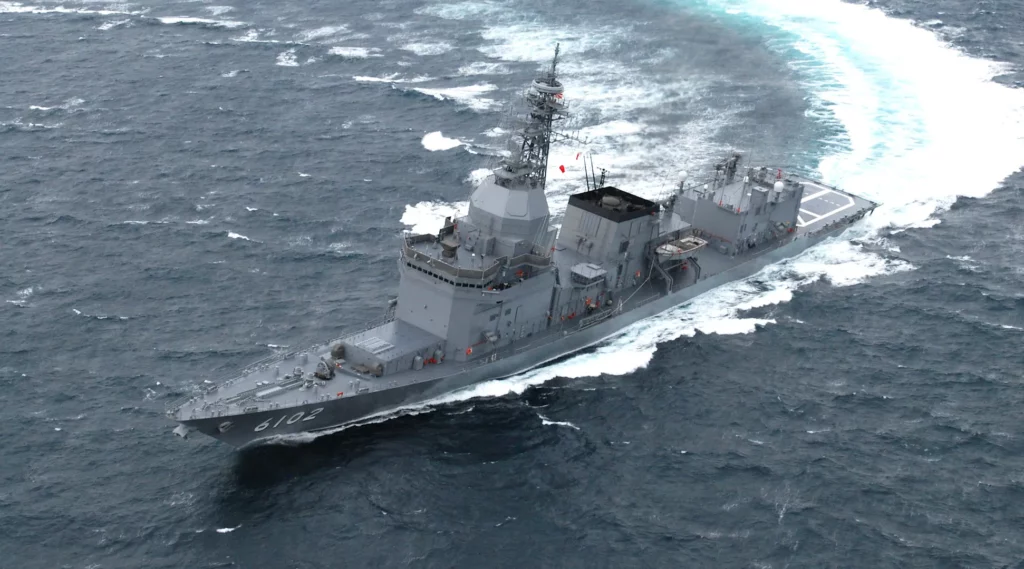
In 2023, ATLA said that it had successfully conducted test firings of a prototype railgun at sea from an unspecified platform, which the organization claimed at the time was a first-of-its-kind achievement for any country. Imagery ATLA released from that testing showed the weapon installed on a test mount rather than the full naval turret now installed on JS Asuka.
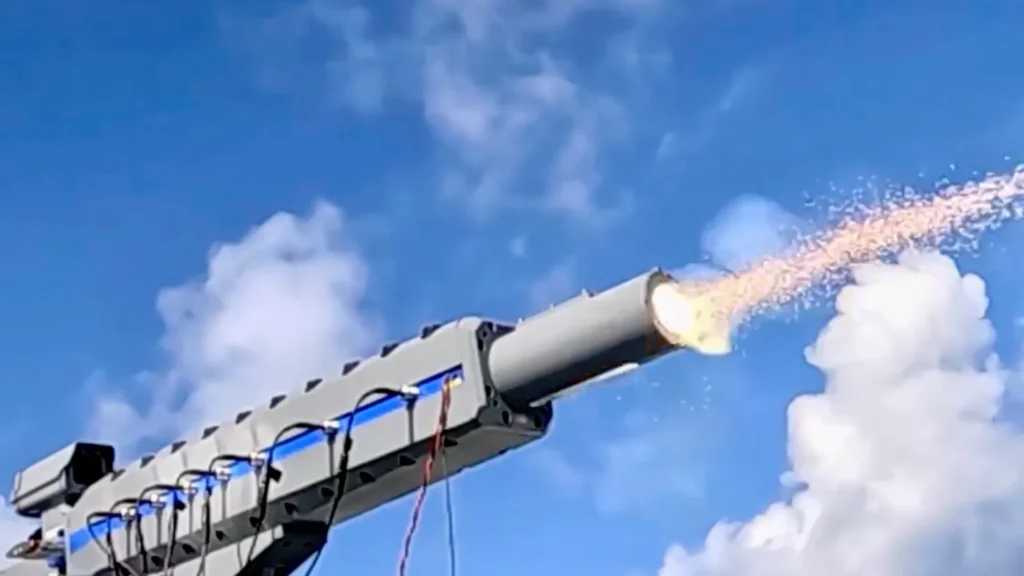
How the Japanese railgun’s design may have evolved since 2023 is unclear, but what can be seen of the weapon now onboard the JS Asuka shows features in line with those seen in pictures of prototypes that ATLA has released in the past. ATLA has reportedly been able to demonstrate the ability to fire rounds at a velocity of around 4,988 miles per hour (2,230 meters per second; Mach 6.5) while using five megajoules (MJ), or 5 million joules (J), of charge energy in previous tests.
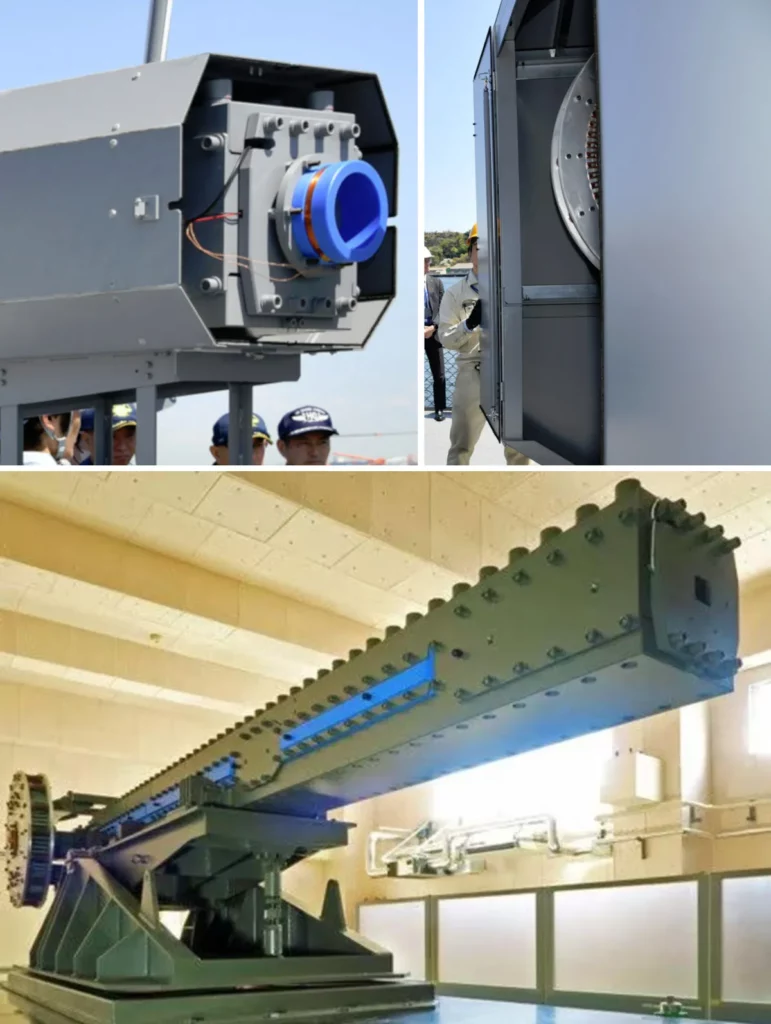
Being able to achieve a muzzle velocity of at least 4,473 miles-per-hour (2,000 meters-per-second) and a barrel life of 120 rounds are among previous testing goals, according to Naval News. Reports have said that ATLA has been pushing to reduce onboard power requirements, as well.
Railguns, which use electromagnets rather than chemical propellants to fire their projectiles at very high velocities, do present significant technological challenges. Most immediately, weapons of this type, historically, have had immense power demands, especially if the goal is to allow for any kind of even relatively rapid-fire capability. The need to keep the system’s components cool creates additional power requirements.
Sustained firing of projectiles at very high speeds also increases the rate of wear on the barrel. Firing projectiles from worn-out barrels has impacts on range and accuracy, as well as potential safety hazards.
The ATLA video below shows previous land-based railgun testing.
In addition, railguns have typically been very physically bulky due to the need for large energy storage batteries and cooling systems. The railgun now on JS Asuka is notably fixed to the ship’s rear flight deck where there is ample open space. Integrating the weapon onto an operational warship in a more traditional arrangement would require finding space for the other components inside the hull.
There are still questions about exactly how Japan envisions fielding any future railguns it might acquire. Building a full naval turret to hold the weapon is certainly in step with operationalizing the design.
At a presentation at the Combined Naval Event 2024 exhibition in the United Kingdom last year, JMSDF Vice Adm. Imayoshi Shinichi, ATLA’s director general of Naval Systems, noted plans to integrate a railgun into Japan’s future 13DDX destroyers, which are expected to begin entering service in the 2030s. ATLA has previously released an artist’s conception of a Maya class destroyer, also known as the 27DDG class, armed with a railgun.
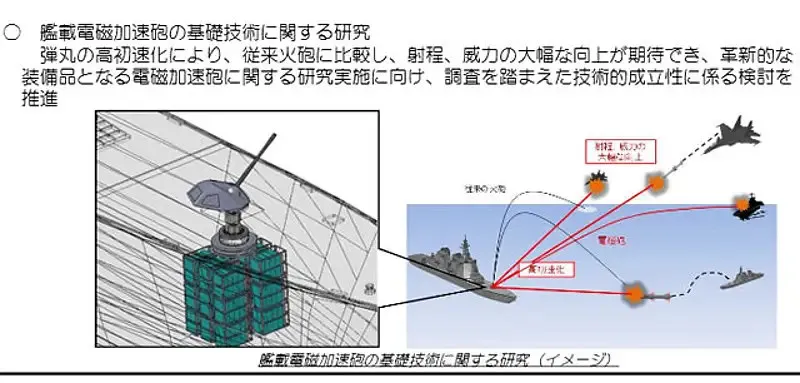
ATLA has also previously released the computer-generated video seen below, which shows truck-mounted railguns in use.
In principle, a practical electromagnetic railgun would offer a highly capable and flexible weapon system that can rapidly engage a wide array of targets at sea, on land, and even in the air, and at considerable ranges. Japan has previously expressed interest in this capability explicitly to help protect against incoming hypersonic threats. Such a weapon would also offer benefits in terms of magazine depth and cost compared to traditional surface-to-air and surface-to-surface missiles, given the small size and lower unit price of the individual rounds.
When it comes to warships, in particular, where physical space is at a premium and where options for reloading missiles at sea can be at best extremely limited, having a weapon system firing lower-cost munitions from a large magazine and that can engage a broad swath of target sets would be a clear boon.
Japan is not the only country to be pursuing railguns, or to have done so in the past, especially for maritime use, for exactly these reasons. Between 2005 and 2022, the U.S. Navy was actively working on a railgun to arm future ships before, as previously noted, shelving the effort in the face of technical issues. By the time the program came to a close, plans for at-sea testing had already been repeatedly pushed back.
There has been continued work on the hypervelocity projectiles developed for the railgun for use in conventional naval and ground-based guns. It’s interesting to note here that the U.S. Army is now looking to make use of the rounds in a new mobile air defense system based around a traditional 155mm howitzer, which you can read more about here.
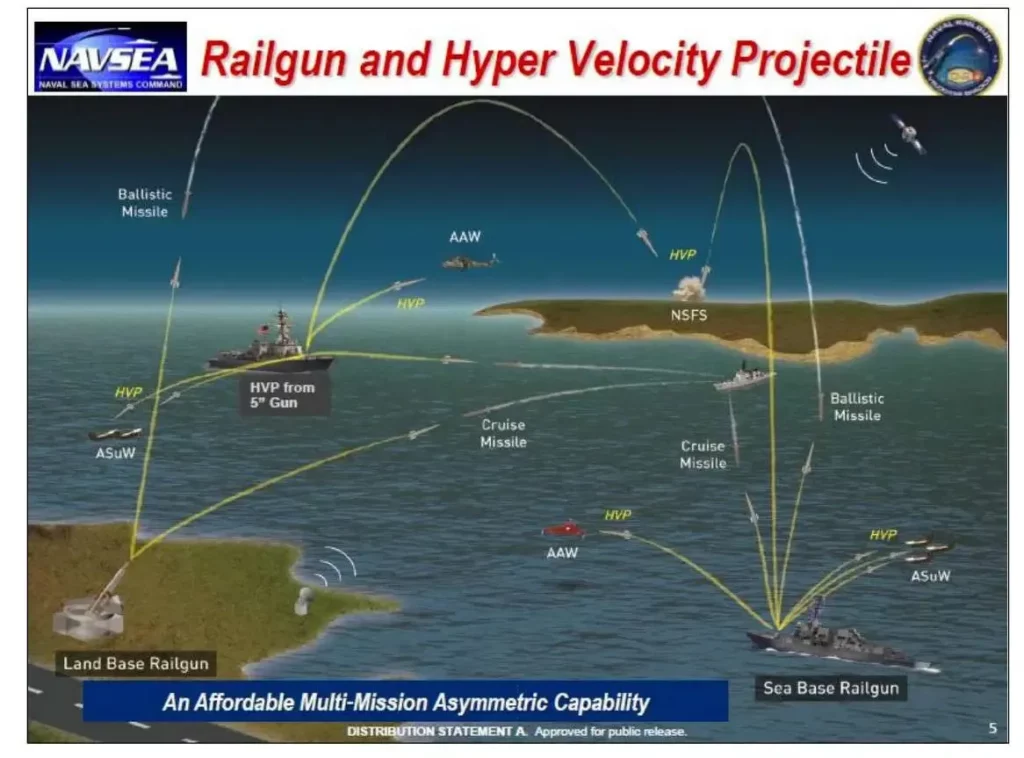
Last year, Japan’s ATLA confirmed that it had been in discussions with the U.S. Navy about leveraging the latter’s prior work in this field. Japanese officials also signed an agreement in 2024 to cooperate on railgun developments with authorities in France and Germany.
China’s People’s Liberation Army has also been pursuing naval railguns, with a turreted design first emerging on a ship in that country in 2018. The current state of the development of that weapon or other Chinese railguns is unclear.
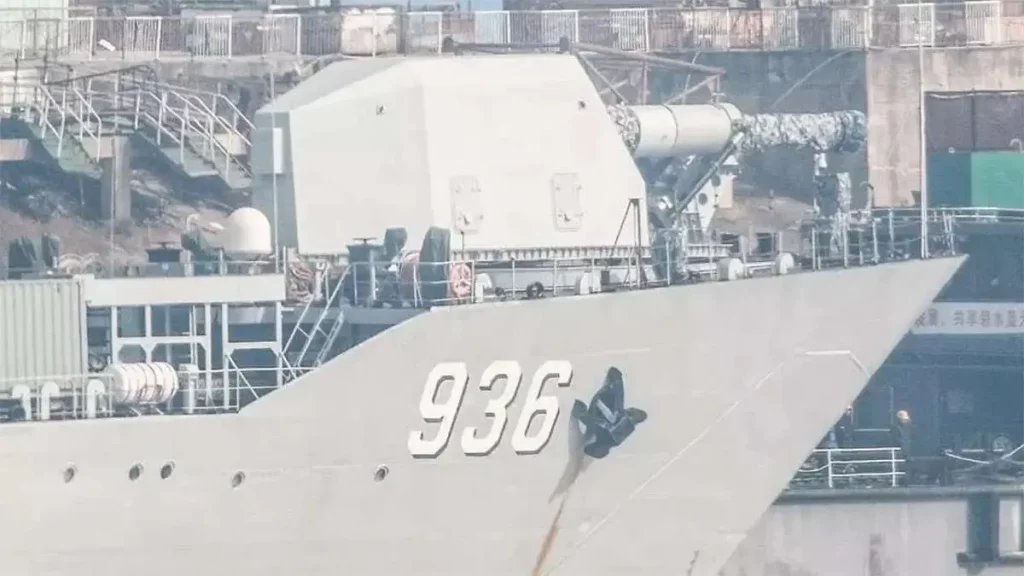
Testing of prototype railguns has also been very publicly underway in Turkey in recent years.
For Japan, the railgun development work reflects larger efforts to expand and otherwise modernize the capabilities of the country’s armed forces, which also includes new hypersonic missiles. This comes in the face of growing regional and global security challenges, particularly emanating from North Korea, China, and Russia.
North Korea has stepped up the development of new ballistic and cruise missiles, as well as types with claimed hypersonic capabilities, in recent years. Some of these have been test-launched over and around Japan.
Japan has numerous direct territorial disputes with China and Russia, and the JSDF has been working to enhance its presence on various outlying islands in recent years. There are also increasing concerns about a contingency arising from a Chinese intervention against Taiwan that could draw in Japanese forces, especially by extension of the heavy U.S. military presence in the country, which would be prime targets in any all-out high-end fight in the region. With all this in mind, the JSDF has been increasingly engaged with allies and partners in activities across the Indo-Pacific region, with a particular eye toward challenging China.
“The Self-Defense Fleet maintains readiness and contributes to the peace and stability of the Indo-Pacific region, not only for the defense of Japan but also for the realization of a ‘Free and Open Indo-Pacific’ in cooperation with allied and like-minded navies,” the JMSDF noted in its brief release about Katsushi’s recent visit to the JS Asuka.
There are still significant questions about when, and if, a practical railgun may enter Japanese service for use on warships or any other platform. The installation of the railgun-armed turret on JS Asuka does show that the country is still currently committed to pursuing these electromagnetic weapons.
Fuente: https://www.twz.com

